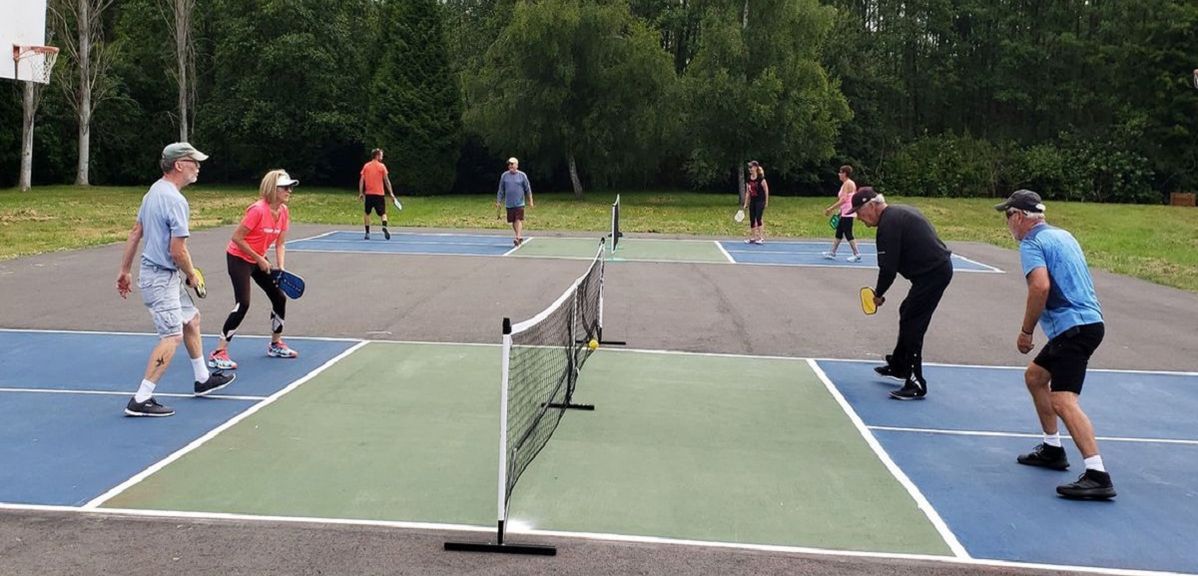Advancements in Pickleball Court Construction: Trends You Should Know
Advancements in Pickleball Court Construction: Trends You Should Know
Blog Article
Boost Local Interaction With Community-Driven Pickleball Court Projects
The development of community-driven pickleball court projects provides an one-of-a-kind opportunity to cultivate regional engagement and reinforce neighborhood connections. The genuine inquiry remains: how can these grassroots initiatives be tactically executed to guarantee sustainability and inclusivity in diverse communities?
Significance of Community Interaction
Neighborhood involvement is an essential aspect in the effective development of pickleball court tasks, as it promotes a sense of ownership and collective obligation among homeowners. When community participants are proactively associated with the planning and application stages, they are more probable to advocate for the job's lasting success. Engaging stakeholders such as neighborhood gamers, households, and leisure groups makes sure that the facilities satisfy the varied needs and choices of the area.
Furthermore, neighborhood interaction grows a helpful atmosphere where homeowners really feel empowered to add their sources and concepts. Pickleball court construction. This collaborative method can result in cutting-edge solutions that improve the layout and functionality of the courts, making them a lot more appealing to a broader target market. Additionally, including residents in decision-making processes can strengthen social connections, promoting inclusivity and unity within the neighborhood
The visibility of community support for a pickleball project can likewise play a critical function in protecting funding and approval from regional authorities. By showing a shared commitment to leisure development, neighborhoods can efficiently support for resources and policy changes that prefer the establishment of pickleball courts, eventually improving the regional culture and recreational landscape.
Actions to Initiate a Project
Initiating a pickleball court project needs a systematic method that constructs on the foundation of area interaction established in previous conversations. The first action is to construct a project board making up neighborhood stakeholders, fanatics, and agents from appropriate companies. This diverse team guarantees that numerous point of views are taken into consideration.
Following, carry out a demands evaluation within the neighborhood. Surveys, emphasis groups, and public meetings can be efficient in gauging passion and gathering input on prospective court areas, preferred amenities, and organizing choices. Following this, establish a project strategy detailing objectives, timelines, and responsibilities.
As soon as the plan is in area, involve with local authorities to recognize zoning guidelines and any type of required licenses. Communicating transparently with the community throughout this process is critical, as it cultivates trust and encourages further participation.
Furthermore, organizing area occasions can help preserve energy and interest. These events can act as platforms for further conversation and aid to strengthen neighborhood ties. Record every step taken and keep in-depth documents, as this will be advantageous for future phases of the task, consisting of funding and resource purchase.
Financing and Resources Available
Protecting funding and resources for a pickleball court job is often an essential step that can figure out the task's expediency and success. Numerous methods exist for acquiring financial backing, ranging from public page financing to private sponsorships. Local federal government gives, frequently targeted at advertising neighborhood health and wellness and recreation, can give significant sponsorship for such initiatives.
Along with government sources, not-for-profit companies and structures frequently provide gives especially for sports and community growth projects. Involving neighborhood services as sponsors can additionally be a productive method; numerous business aspire to spend in area campaigns that boost their company social responsibility account.
Crowdfunding systems have emerged as a feasible option for grassroots fundraising, making it possible for community participants to add directly to the task. This strategy not just elevates funds yet also cultivates a sense of possession amongst individuals.
Style and Planning Factors To Consider
Effective layout and planning are essential parts of any successful pickleball court task following the procurement of financing and resources. A thorough analysis of the proposed location is important; this consists of examining availability, distance to existing community features, and the potential for exposure and engagement.
The layout of the court have to stick to official size requirements while considering the surrounding atmosphere. Including attributes such as seating, shade structures, and proper lighting can considerably boost gamer experience and spectator satisfaction. Products selected for the court surface ought to prioritize durability and safety and security, with choices like acrylic or asphalt offering optimal performance.
Involving neighborhood participants in the layout procedure fosters a feeling of ownership and makes sure that the facility fulfills regional needs - Pickleball court construction. This can be accomplished through public examinations and surveys, permitting stakeholders to express their choices and worries
Sustainability ought to likewise be a top priority; integrating environment-friendly materials and methods can contribute to long-lasting viability. Developing an upkeep plan to ensure the court continues to be in exceptional condition will support continuous community engagement and involvement in pickleball tasks.

Success Stories and Study
Highlighting the transformative effect of community-driven campaigns, numerous success tales illustrate just how collaborative efforts have resulted in the development of vivid pickleball courts across her latest blog different regions. One notable instance is the campaign in a town in Florida, where locals grouped to convert an underutilized tennis court into a devoted pickleball facility. Through fundraising events and partnerships with regional companies, the neighborhood increased enough funds to set up brand-new nets, resurfacing, and lines, inevitably promoting a lively hub for neighborhood players.
Similarly, in a suburb of The golden state, a grassroots activity arised to create pickleball courts in a regional park. The job not only involved volunteers for construction yet likewise included workshops to engage area participants in the sport. Consequently, the courts became a prime focus for social interaction and fitness, drawing in players of every ages.
These situation researches exhibit just how community-driven projects can improve neighborhood involvement, advertise exercise, and reinforce social bonds. By leveraging collective sources and enthusiasm, communities can successfully maintain and develop pickleball centers that offer diverse populations and foster a feeling of belonging.

Verdict
In conclusion, community-driven pickleball court jobs serve as crucial instruments for improving neighborhood involvement and promoting a feeling of belonging amongst homeowners. By focusing on stakeholder participation throughout the preparation and application stages, these campaigns can efficiently address diverse area demands. In addition, leveraging offered resources and examining successful case studies can give important understandings for future jobs. Eventually, such initiatives add to the makeover of public areas into dynamic facilities of physical fitness and social interaction, reinforcing community connections.
The introduction of community-driven pickleball court projects provides a distinct possibility to foster local interaction and strengthen neighborhood ties.Area interaction is a crucial aspect in the successful development of pickleball court jobs, as it cultivates a feeling of possession and cumulative responsibility amongst homeowners. When neighborhood members are proactively included in the preparation and implementation phases, they are more likely to advocate for the job's long-lasting success.Launching a pickleball court job requires a methodical approach that constructs on the foundation of neighborhood involvement developed in previous discussions. The job not only engaged volunteers for building but explanation likewise consisted of workshops to involve area members in the sporting activity.
Report this page